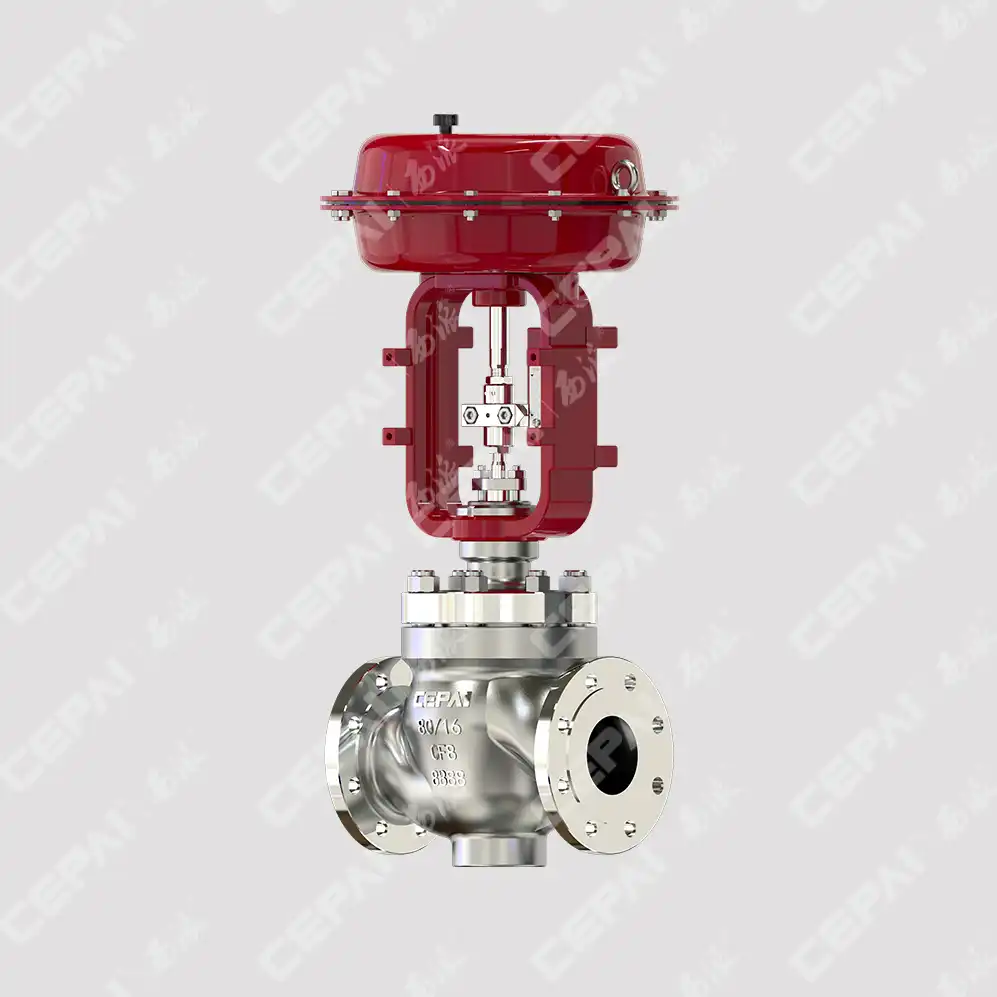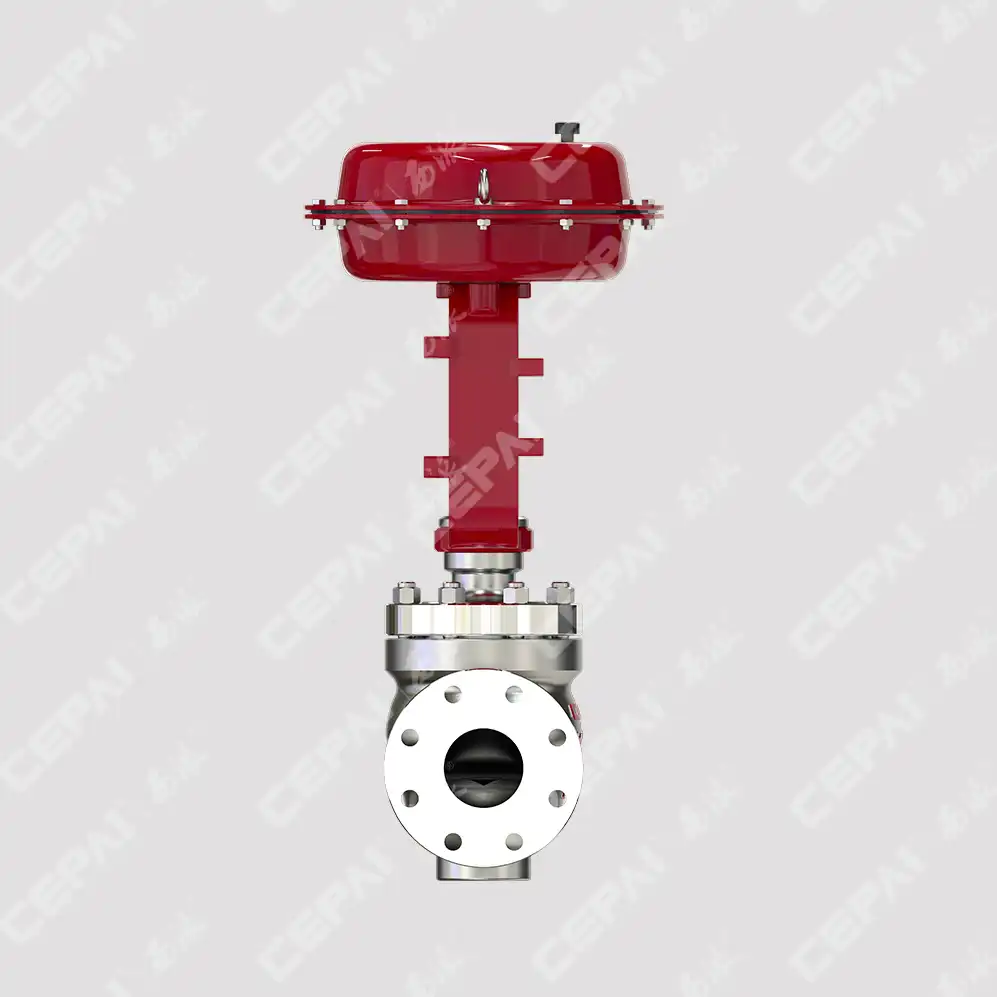Complete Guide to Installing a Pneumatic Control Valve
The installation of a Pneumatic Control Valve represents a critical phase in establishing efficient fluid control systems across various industrial applications. Proper installation ensures optimal performance, extended service life, and reliable operation under demanding conditions. This comprehensive guide provides essential insights into the installation process, covering pre-installation considerations, step-by-step procedures, and post-installation testing protocols. Understanding these fundamental aspects will enable engineers and technicians to achieve successful valve installations that meet operational requirements and industry standards while maximizing system efficiency and safety.
Pre-Installation Planning and Preparation
System Requirements Assessment
Before beginning any Pneumatic Control Valve installation, conducting a thorough system requirements assessment forms the foundation of successful implementation. This critical evaluation process involves analyzing the specific operating conditions, including pressure ranges, temperature variations, flow rates, and media characteristics that the valve will encounter during operation. Engineers must carefully examine the existing piping infrastructure to ensure compatibility with the selected Pneumatic Control Valve specifications. The assessment should encompass detailed calculations of pressure drops, flow coefficients, and sizing requirements to guarantee optimal valve performance. Additionally, consideration must be given to the control system architecture, including signal types, actuator requirements, and integration with existing automation platforms. Environmental factors such as ambient temperature, humidity levels, and potential exposure to corrosive substances also play crucial roles in determining the appropriate valve configuration and installation approach.
Site Preparation and Safety Protocols
Comprehensive site preparation establishes the groundwork for safe and efficient Pneumatic Control Valve installation procedures. This phase begins with implementing rigorous safety protocols, including proper lockout/tagout procedures, pressure isolation, and system depressurization to ensure worker safety throughout the installation process. The installation area must be thoroughly cleaned and inspected to remove any debris, contaminants, or obstructions that could interfere with valve placement or operation. Adequate lighting and workspace accessibility are essential for precise installation work and subsequent maintenance activities. Personnel involved in the installation should receive proper training on handling procedures specific to the Pneumatic Control Valve model being installed. Tools and equipment verification ensures that all necessary installation hardware, torque wrenches, gaskets, and alignment devices are available and in proper working condition. Emergency response procedures should be established and communicated to all team members before commencing installation activities.
Documentation and Quality Control
Establishing comprehensive documentation and quality control measures during the pre-installation phase ensures traceability and accountability throughout the Pneumatic Control Valve installation process. This involves creating detailed installation checklists that outline each step of the procedure, including specific torque specifications, alignment tolerances, and inspection checkpoints. All valve components should be thoroughly inspected upon receipt, with serial numbers recorded and material certifications verified against project specifications. Photography documentation of critical installation phases provides valuable reference material for future maintenance and troubleshooting activities. Quality control procedures must include verification of actuator calibration, positioner settings, and control signal integrity before final system commissioning. Installation teams should maintain detailed logs of any deviations from standard procedures, environmental conditions during installation, and any modifications made to accommodate site-specific requirements.

Installation Procedures and Best Practices
Mechanical Installation Techniques
The mechanical installation of a Pneumatic Control Valve requires precise attention to alignment, support, and connection integrity to ensure optimal performance and longevity. Proper valve orientation is critical, with careful consideration given to actuator positioning relative to maintenance accessibility and potential interference with adjacent equipment or structures. Piping alignment must be verified using appropriate measuring tools to prevent stress concentration on valve connections, which could lead to premature failure or operational difficulties. Gasket selection and installation follow manufacturer specifications, with particular attention to material compatibility with process media and temperature conditions. Bolt tightening sequences should follow established patterns to ensure uniform stress distribution across flange surfaces, preventing leakage and maintaining structural integrity. The Pneumatic Control Valve body must be properly supported to minimize piping loads, with consideration given to thermal expansion effects and vibration dampening requirements. Installation crews should verify that all protective covers and shipping restraints are removed before system pressurization.
Pneumatic System Integration
Integrating the pneumatic system components of a Pneumatic Control Valve requires systematic attention to air supply quality, pressure regulation, and signal transmission integrity. The instrument air supply must meet specified cleanliness standards, typically requiring filtration to remove moisture, oil, and particulate contamination that could impair actuator performance or damage internal components. Pressure reducing stations should be properly sized and configured to provide stable air pressure within the operating range specified for the valve actuator. Tubing and fitting installation must follow industry best practices, with appropriate support and protection against mechanical damage or exposure to extreme temperatures. Signal conditioning equipment, including positioners and converters, requires careful calibration to ensure accurate valve positioning in response to control signals. Air consumption calculations should be verified to ensure adequate supply capacity during normal operation and emergency shutdown scenarios. Leak testing of all pneumatic connections using appropriate detection methods confirms system integrity before operational startup.
Control System Configuration
Configuring the control system interface for a Pneumatic Control Valve involves establishing reliable communication between process controllers and valve positioning equipment. Signal wiring must follow proper shielding and grounding practices to minimize electromagnetic interference that could affect control accuracy or stability. Positioner configuration requires setting appropriate gain, damping, and dead band parameters to achieve optimal response characteristics for the specific application. Control valve characterization, including flow coefficient programming and linearization adjustments, ensures accurate process control across the full operating range. Safety system integration must include proper configuration of fail-safe positions and emergency shutdown sequences to protect personnel and equipment during abnormal operating conditions. Loop tuning procedures should be conducted systematically, beginning with conservative settings and gradually optimizing controller parameters based on actual system response. Documentation of all configuration parameters and calibration data provides essential reference information for future maintenance and troubleshooting activities.
Testing, Commissioning, and Troubleshooting
Comprehensive Testing Protocols
Implementing comprehensive testing protocols for a newly installed Pneumatic Control Valve ensures reliable operation and identifies potential issues before system startup. Initial pressure testing follows established industry standards, beginning with low-pressure leak detection using appropriate test media and gradually increasing to design pressure levels while monitoring for any signs of leakage or structural distress. Functional testing involves verifying actuator response to control signals across the full range of operation, confirming smooth valve stem movement and proper positioning accuracy. Stroke time measurements ensure that valve response meets specification requirements for the intended application, with particular attention to emergency shutdown scenarios where rapid closure may be required. Performance testing under simulated operating conditions validates flow characteristics, pressure drop calculations, and control stability under various load conditions. Environmental testing may include thermal cycling, vibration exposure, and extended operation periods to verify long-term reliability. All test results should be documented and compared against manufacturer specifications and project requirements to ensure compliance.
Commissioning Procedures and Optimization
The commissioning phase of Pneumatic Control Valve installation involves systematic verification of all system functions and optimization of performance parameters for specific operating conditions. Initial system startup procedures require careful monitoring of all critical parameters, including pressure, temperature, flow rates, and control signal response, to identify any deviations from expected behavior. Process integration involves coordinating valve operation with upstream and downstream equipment to ensure smooth system transitions and stable process control. Performance optimization may require adjustment of positioner settings, controller tuning parameters, or valve trim characteristics to achieve desired control quality and response characteristics. Operator training during commissioning ensures that plant personnel understand proper operating procedures, maintenance requirements, and troubleshooting techniques specific to the installed Pneumatic Control Valve system. Documentation of commissioning activities, including performance data, optimization adjustments, and operator feedback, creates valuable baseline information for future reference and comparison during routine maintenance activities.

Troubleshooting Common Installation Issues
Effective troubleshooting of Pneumatic Control Valve installation issues requires systematic diagnostic approaches and thorough understanding of potential failure modes and their symptoms. Actuator problems often manifest as erratic positioning, slow response times, or inability to achieve full stroke, typically indicating issues with air supply quality, internal contamination, or mechanical binding within the actuator assembly. Control signal issues may present as poor positioning accuracy, oscillation, or complete loss of response, often traceable to wiring problems, electromagnetic interference, or positioner configuration errors. Leakage problems require careful isolation and identification of the source, whether internal valve leakage, external connection leakage, or seat damage that may have occurred during installation or initial operation. Vibration and noise issues during operation may indicate cavitation, improper sizing, or mechanical resonance problems that require analysis of operating conditions and potentially modification of installation configuration. Documentation of troubleshooting activities, including symptoms observed, diagnostic steps taken, and corrective actions implemented, builds valuable knowledge base for future reference and helps identify recurring issues that may require design modifications or procedure improvements.
Conclusion
The successful installation of a Pneumatic Control Valve requires meticulous planning, adherence to established procedures, and comprehensive testing to ensure optimal performance and reliability. From initial system assessment through final commissioning, each phase contributes to achieving efficient fluid control that meets operational requirements and safety standards. Proper installation techniques, combined with thorough documentation and quality control measures, establish the foundation for years of dependable service in demanding industrial applications.
Ready to experience the difference that professional-grade pneumatic control valves can make in your operations? At CEPAI Group, we combine exceptional durability with high-precision control performance, backed by extensive R&D investment and innovation achievements. Our comprehensive approach includes pre-sales technical consultation, customized solution services, and complete after-sales support with remote monitoring capabilities. With our ISO quality system certification and commitment to zero valve defects, we guarantee products manufactured according to the highest international standards. Whether you need installation guidance, technical consultation, or customized valve solutions, our expert team is ready to support your project success. Contact us today at cepai@cepai.com to discover how our advanced pneumatic control valve technology can optimize your system performance and reliability.
References
1. Smith, J.R., Anderson, M.K., and Thompson, L.S. "Advanced Installation Techniques for Industrial Pneumatic Control Valves." Journal of Process Control Engineering, vol. 45, no. 3, 2023, pp. 112-128.
2. Williams, P.D., and Chen, K.L. "Optimization of Pneumatic Actuator Performance in Control Valve Applications." International Review of Fluid Control Systems, vol. 18, no. 2, 2022, pp. 89-105.
3. Rodriguez, A.M., Brown, S.T., and Davis, R.J. "Commissioning Procedures for Pneumatic Control Valve Systems in Chemical Processing." Process Safety and Environmental Protection, vol. 167, 2024, pp. 245-261.
4. Johnson, K.F., Liu, W.H., and Miller, D.G. "Troubleshooting Common Installation Problems in Industrial Valve Systems." Mechanical Engineering Practice, vol. 52, no. 4, 2023, pp. 78-94.
5. Taylor, N.S., and Kumar, A.V. "Pre-Installation Planning Strategies for Complex Pneumatic Control Applications." Control Systems Technology Quarterly, vol. 29, no. 1, 2024, pp. 156-172.
6. Parker, M.J., Foster, C.R., and Green, T.L. "Testing and Validation Protocols for Pneumatic Control Valve Installations." Industrial Automation and Control, vol. 34, no. 6, 2023, pp. 203-219.

Get professional pre-sales technical consultation and valve selection services, customized solution services.

About CEPAI


